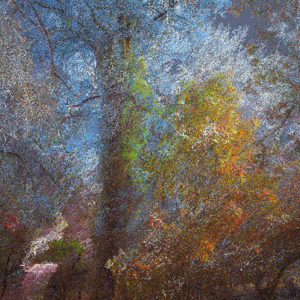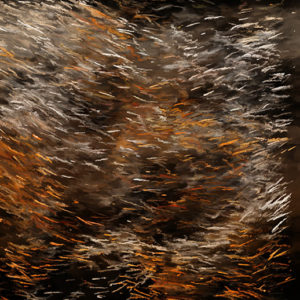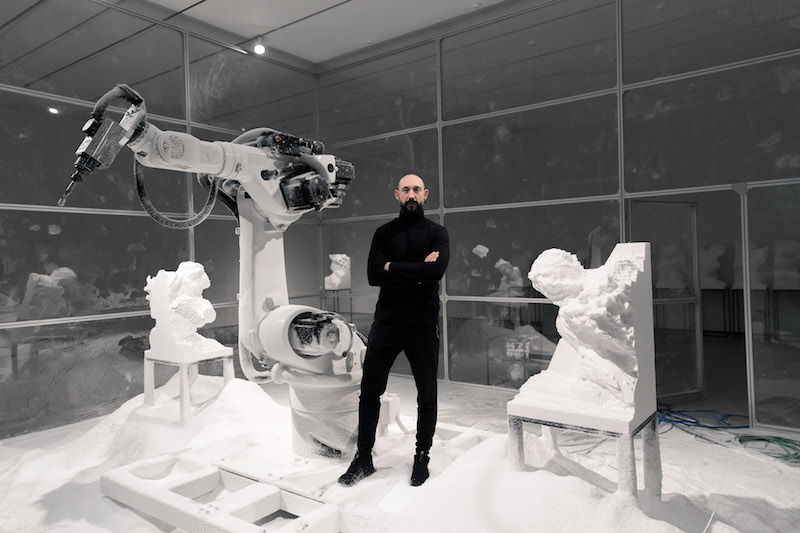PIONEER TOWER COMMISSIONED ARTIST | Quayola
Quayola (b.1982) employs technology as a lens to explore the tensions and equilibriums between seemingly opposing forces: real and artificial, figurative and abstract, old and new. His varied practice, all deriving from custom computer software, includes audio/visual performance, video, sculpture, and works on paper.
Texas Surveys is the latest iteration of Quayola’s ongoing research on the tradition of landscape painting, and more broadly a reflection on man’s tradition of representing nature.
The observation of nature is at the basis of the primitive bond of man with his surroundings. In his work, Quayola reclaims an idea of knowledge from the past, in which the artistic practice allowed scientists to decipher nature. In Leonardo Da Vinci’s studies, for instance, the pictorial practice served the task of understanding the natural world. Similarly, Quayola’s artistic research is allowing us a new, different glimpse at the natural world, which can be achieved through the cooperation between him and the technological apparatus.
For the making of Texas Surveys, Quayola employed high-precision laser scanners, custom computer-vision systems, and custom graphics software specifically built for this project.
Secluded landscapes were translated into billions of points, becoming impressionist-like textures. Horses’ movements were digitized onto detailed datasets, slowly constructing new digital/pictorial aesthetics.
In the first of these chapters, Quayola employed high-precision 3D laser scanning systems to capture geometric data of various trees in Fort Worth. Each tree was translated into hundreds of millions of 3D coordinates, which was then visualized digitally as complex clusters of geometries. The resulting animation explored both the intricacies of natural forms as well as the aesthetics of digital reproduction.
The second chapter focused on the observation and, ultimately , new representation of one of Fort Worth’s most iconic symbols: horses. Employing the latest digital tracking systems, Quayola digitized a series of horses’ movements and translate them into abstract animations. The rhythmic movements of the horse became a dataset to drive pictorial simulations. The result of this process was a series of computational paintings, on one side completely abstract, but on the other fully driven by the animal’s motion.




